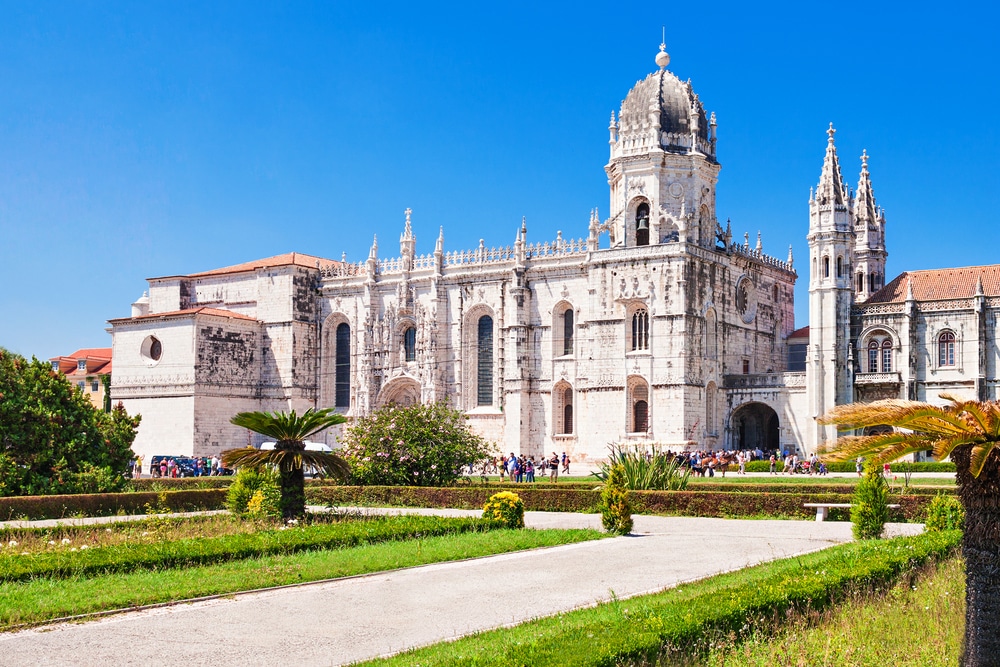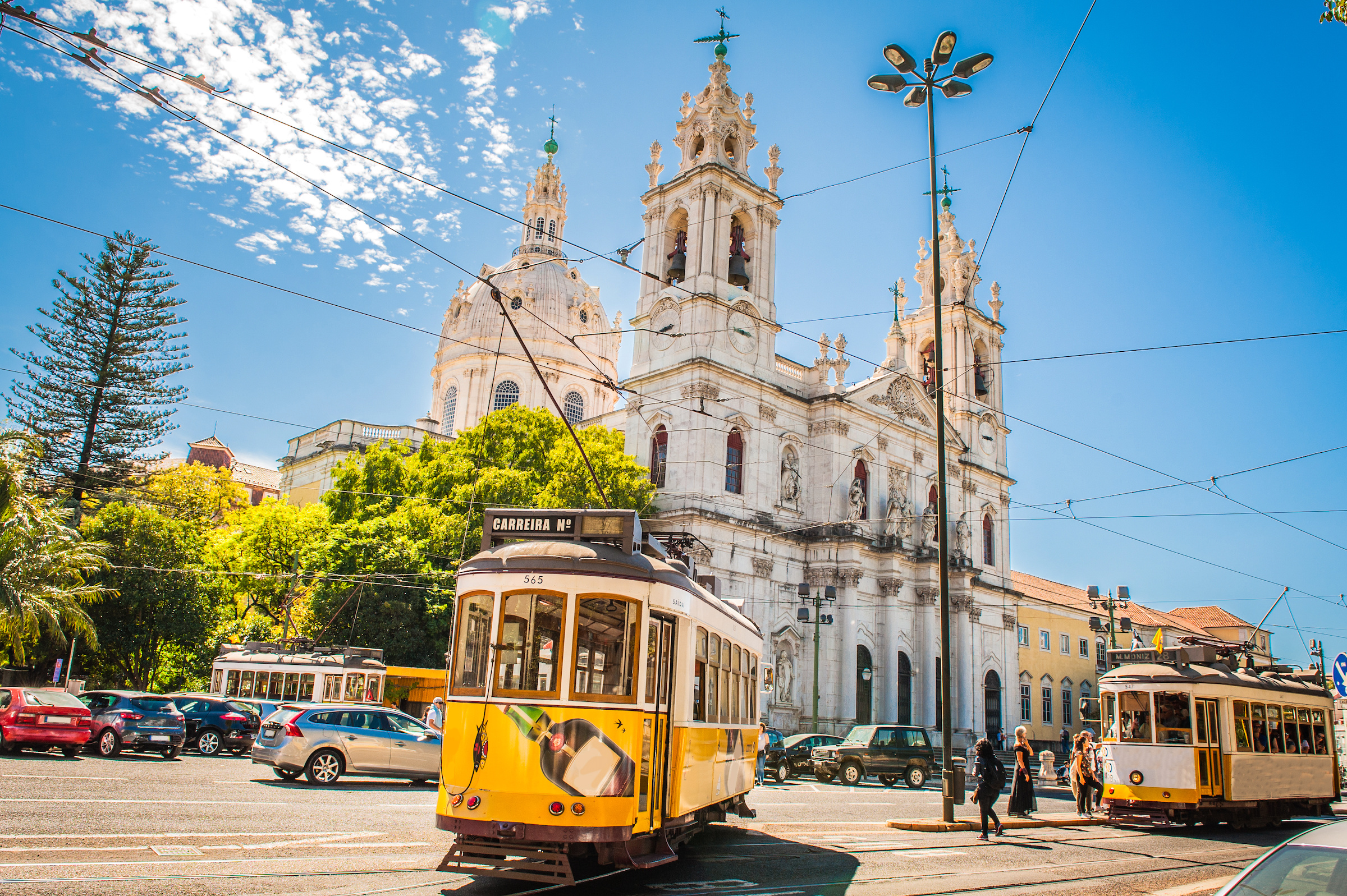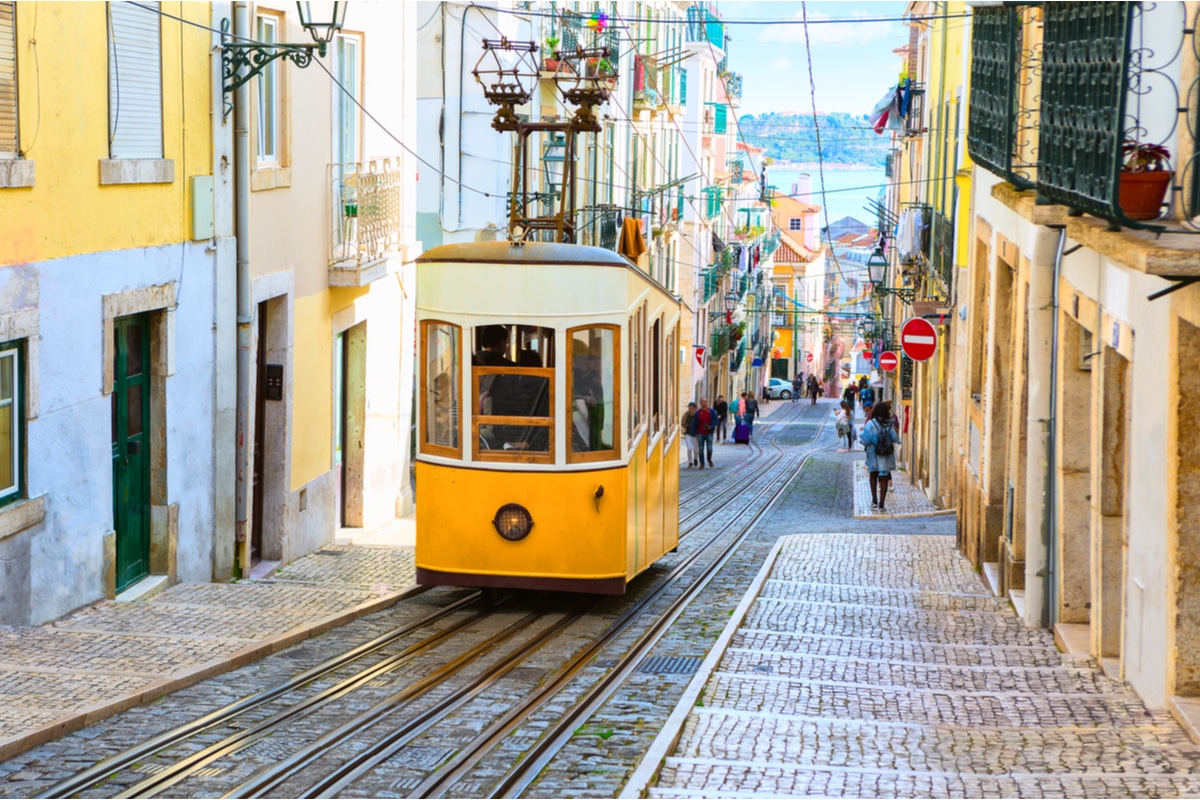Jerónimos Monastery
Rich in relationships and facets, the 180 m long limestone building rises up, radiant in the glow of the Portuguese sun. In the district of Belém, (in German, Bethlehem) the breathtaking, filigree construction awaits astonished tourists and culture enthusiasts. The facade, the south portal, the large interior of the church, created by the famous architect João de Castilho, and the cloisters are the treasures worth seeing.

The south portal
Between the two doors of the 32 m high portal, the statue of Henry the Navigator awaits the curious. He was a promoter of seafaring, voyages of discovery and colonisation in the early 15th century. Finely chiselled ornaments, such as flowers and branches, as well as biblical scenes adorn the arch above him. Mary and Child are enthroned above it, and between two slender, flanking turrets, which art connoisseurs call Gothic pinnacles, the angel Gabriel looks down serenely from above.
The monastery church
The visitor enters the interior of the church through the west portal. The 25 m high ribbed vault is supported by 6 slender columns. They are richly decorated, which reduces the impression of the heaviness of their load-bearing function. A static masterpiece that not only survived 500 years but also the heavy earthquake in Lisbon in the year 1755 without any damage. The discoverer Vasco da Gama is buried under the gallery. This church was built in his honour. He and his crew are said to have spent the last night before his voyage of discovery to India there, where today the church and the monastery of the Hieronymites are located. This order was especially widespread in Spain and inhabited the monastery until 1834.
The cloister
Impressive for its size and ornate Gothic cross vaulting, beautiful for the light that falls into the two-story hallway through the wide, open arches. From the inner courtyard of the monastery you can admire the magnificent ornaments, the slender turrets with their conical domes reminiscent of minarets, figures, portraits or even animals. In this magnificent building, the visitor encounters stylistic elements from the Occident as well as from the Orient. A style that is called Manueline style after the builder Manuel I, King of Portugal, and that combines Gothic basics with Renaissance elements. The beginning of the construction is dated 1502.
Sights near the monastery
In the west wing of the monastery, a visit to the Naval Museum is worthwhile, where the adventurous time of the discoveries becomes vivid. Those who want to delve deeper into the history of Portugal will find what they are looking for in the archaeological museum at the same location.
The Belém district is one of the oldest in Lisbon. Since 1983, the Torre de Belém belongs to the world cultural heritage like the monastery. The park in front of the monastery is also worth seeing with its fountains and flowerbeds. Culinary delights include the famous Pastéis de Belém confectionery with its vanilla tarts. Egg cream on puff pastry. Baked according to old monastery tradition and in its refined details at least as secret as the recipe for Coca-Cola.
So visitors to this Lisbon suburb will find evidence of religion, art and architecture carved in stone, a touch of adventure and a certain unforgettable sweet crunch on the tongue.



